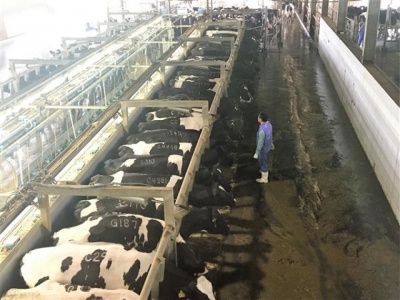Value Chain Loan: Insufficient, weak and loose

Value chain loan is one of the most popular and effective agricultural lending strategies in the world today. However, this form of lending in Vietnam is still insufficient and weak due to the linkage in the value chain is very
Value chain linkage of Vietnamese enterprises is still very loose, making the loan in the value chain is very weak and insufficient. Photo: Huong Diu.
Value chain lending is defined as the flow of investment into different links in a value chain. This is a comprehensive approach in which not only the direct borrower but also the process of analyzing and forecasting specific dates to choose the stage loans, the stages in the value chain.
In this form of lending, the bank can provide mortgages in commodities, movables (loans for traders and processors), or also in the form of commercial financing (for consumption, distribution of agricultural products).
Therefore, at the workshop on "Value Chain Loan - Policy and Practical Application" organized by the Banking Strategy Institute (The State Bank of Vietnam) and Oxfam in Vietnam on July 6th in Hanoi, experts and businesses all value this model, if applied effectively in Vietnam will create favorable conditions for the development of agriculture in Vietnam.
In this regard, Mr. Pham Xuan Hoe, Deputy Director of the Banking Strategy Institute, said that borrowing in the value chain, closed lines, this stage can be beneficial to the other, so the banks can lend to businesses in the form of trust. In addition, this form helps banks mobilize many forms of financial products and services such as deposit, L/C, savings, insurance, etc., thus increasing the bank's benefits and creating conditions for banks to reduce lending rates for businesses.
However, the assessment of the status of this form, Dr. Tran Cong Thang, Deputy Director of the Institute of Policy and Strategy for Agriculture and Rural Development, said that the linkage between farmer households and enterprises is very small and loose, so the loan chain has many limitations. Moreover, this form is still a lack of supporting mechanisms and policies, most large enterprises have borrowed in the value chain, small and medium enterprises have not been granted this mechanism.
The cause of the above situation, according to Dr. Thang, the size of small production households, production areas are not concentrated; farmers do not have many options for selling products, linking good farmers with the poor ones.
In particular, the key reason for the weak link is due to the unfair distribution of profits. According to Dr. Tran Cong Thang, the distribution of profit expenses in rice export accounts for 83% of the cost of the farmer's income, but earns 53% of the profits; exports cost only 4% but enjoy up to 30% of profit etc.
In addition, according to Dr. Thang, the problem is limited due to tight commitments, lack of role of local government and commercial arbitration; the chain is also high risk, the capital is small but the investment is spread; lack of policies to attract real businesses in association with farmer households; farming practices.
Besides, according to Mr. Pham Xuan Hoe, the reason for the rest is due to financial products are not diversified and synchronized, while the subject line under the chain accounted for 95.5%, foreign currency trading accounted for 48.2%, export-import financing accounted for 47.3% etc., financial leasing accounted for only 10.9%, factoring accounted for 17.3%.
Therefore, in the coming time, experts said that Vietnam's agriculture needs to step up restructuring and build sustainable value chain models.
In particular, in order to promote value chain lending, Mr. Pham Xuan Hoe expects enterprises to participate in the chain must actively cooperate and supply inputs and outputs of agricultural and agricultural products; together with the commercial banks, they shall be responsible for distributing the interests and profits of the members in the chain on a public and transparent basis.
"Businesses must negotiate a code of conduct (note the criteria for corporate social responsibility, social impact investments, and risk-sharing to the benefit of farmers) for banks and enterprises have the rules of law in accordance with the market", Mr. Hoe proposed.
Có thể bạn quan tâm
 Vietnam’s cashew problem: A tough nut to crack
Vietnam’s cashew problem: A tough nut to crack Vietnam’s cashew processing enterprises need far more nits than the country grows and are therefore forced to import large quantities.
 VFA: Vietnam to attend Philippine rice tender
VFA: Vietnam to attend Philippine rice tender Vietnam will join a tender to supply 250,000 tons of rice for the Philippines, Huynh The Nang, chairman of the Vietnam Food Association (VFA)
 Rice export target set at 5.7 million tonnes
Rice export target set at 5.7 million tonnes The Việt Nam Food Association (VFA) has set the target for rice export at 5.7 million tonnes this year, up 800,000 tonnes from 2016, amid rising global demand.